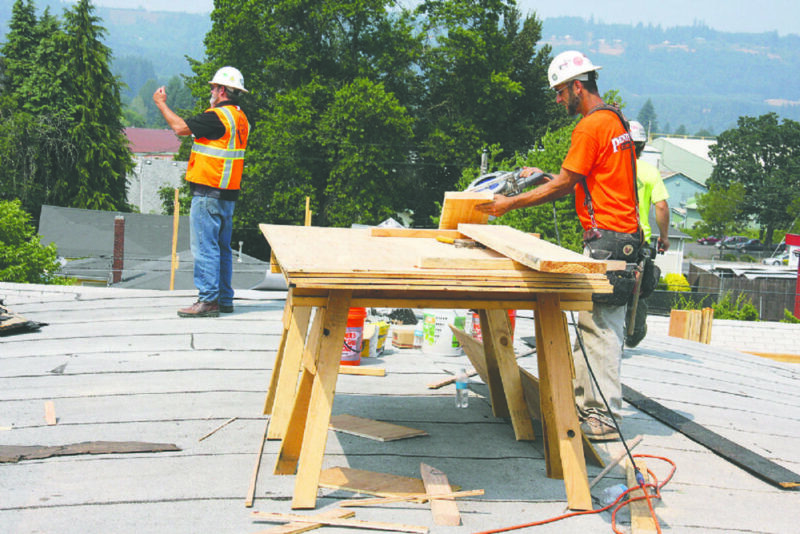Sean C. Morgan
Seismic upgrades in the Sweet Home High School auditorium are well under way and on time, and the Sweet Home School District planned to sell $4 million in bonds this week with construction beginning next year.
“Right now, if all goes according to plan, the bond sale will be this coming Tuesday, Aug. 15,” said Business Manager Kevin Strong. Standard and Poor’s has updated the district’s credit rating to A+, which should result in a lower interest rate on the bond sale.
“That basically means we’ll be able to pay it off sooner,” Strong said. “We’ll see on Tuesday.”
Voters approved a $4 million bond levy in November to pay for a major remodel at Sweet Home Junior High School as well as security and infrastructure improvements at each of the other schools.
The state matched the bond with an additional $4 million, providing a total of $8 million for the projects.
In the past year, the state has awarded the district about $5.9 million in grants to pay for seismic upgrades at four schools. The district began work in the high school auditorium in early June. That work is scheduled for completion in October.
In the upcoming month, the district will issue a request for proposals for engineering services for the Hawthorne, Holley and Foster school seismic upgrade projects, Strong said. The district will have a lot of work going simultaneously between the bond and seismic upgrades, which prepares buildings to hold up better during an earthquake, protecting the people inside the buildings.
Once a contractor is selected, the district will decide when to complete the work, either in 2018 or 2019.
Construction at Sweet Home Junior High will begin next summer and finish in fall 2019, Strong said. The school will continue to function. Details on how remain to be determined, but “ideally we will be able to use the existing space.”
Most classrooms will remain in place.
It may be cramped in some areas, Strong said. The space in front of the library was originally designed to be the school cafeteria, and could serve in that role.
Strong said the goal is to provide a good educational experience during construction.
The project will include a new vestibule; replace modular buildings that currently house classrooms and a cafeteria; and add a slope to the roof along with numerous other improvements to the facility.
“Really, the goal of the Junior High project is to extend the life of that facility for the next 50 years,” Strong said.
The auditorium seismic upgrade is scheduled to finish in October, Strong said. It will displace music teacher Duncan Tuomi’s class for about two weeks at the beginning of the school year.
Project Supt. Mark Speelman said the project is on time and going very well.
The project essentially ties and attaches the auditorium walls to the roof structure, with reinforcement and stiffening of the trusses in the roof.
Built about 70 years ago, the auditorium used a friction-fit style of construction, in which the trusses sit on the walls and are “floating,” Speelman said.
The major concern with the existing roof structure is that the bottom truss chord could snap during a seismic event from bouncing up and down, Strong said, and the trusses could slip off the walls supporting them. The upgrade will also improve the auditorium’s ability to handle snow loads.
“Most of it is infrastructure that no one will ever see,” Strong said. Visible changes will be LED auditorium lighting and new acoustic panels.
The biggest challenge has been supplies, he said.
So much construction is in progress around the area, Speelman said, that supplies like fabricated steel and people who do specialty work are scarce.





